One day in October 1924, a young French woman who had recently been widowed took out some black-bordered sheets of notepaper and wrote a letter to her closest surviving relative – a sister-in-law in Dublin.
Alice Marie Victorine Hubert Sykes was writing from Tours, France. The letter was a cri de coeur. “We must be her two mothers as she has but ourselves in the world... I am glad to feel you are there if anything happened to me … Now don’t say you are old, this must not be said. If you feel young and try to be young, you are young… You really are the only person in the world who I could trust to leave her to… ”
'Elizabeth who?' was the question everyone was asking of this woman whose name had never been in the public domain during her lifetime
The recipient of the letter was Annette Kathleen Sykes, who lived at 39 Lower Leeson Street in Dublin, and was then aged 63. Her only sibling, English-born Otway Richard Sykes, was the now deceased husband of Alice Sykes. Annette had a baby niece she had not yet seen, Elisabeth Annette Alice Sykes, born on January 14th of that year, and whose second name was a tribute to her aunt in Ireland.
At the time of writing the letter, Alice Sykes had tuberculosis; an illness she correctly feared might kill her. It was this fear that made her implore her much older sister-in-law to be a mother to her baby daughter, should she not survive the infection that was virulent throughout France at that time.
Less than two years later, Alice Sykes was dead. Her daughter was brought to her aunt in Ireland; a country she was to make her primary home for the rest of her long life, all 92 years of it.
€30m to charity
Elizabeth O'Kelly, as the former Elisabeth Sykes was known as at the time of her death, died peacefully on December 11th, 2016 in Stradbally, Co Laois. It was only in October this year that her name suddenly blazed into public consciousness. The news emerged that she had left a remarkable €30 million to charity.
Five charities were to benefit equally from her legacy: the Irish Cancer Society; the Royal National Lifeboat Institution; the Irish Heart Foundation; the Irish Kidney Association; and the Irish Society for Autism. It was an act of personal generosity that will benefit many citizens of this country.
“Elizabeth who?” was the question everyone was asking; of this woman whose name had never been in the public domain during her lifetime.
In 1926, Annette Sykes, then 65, and unmarried, took in her two-year-old orphaned niece. It was a show of familial love that must also have been daunting, given the vast age gap between them, and the fact she had had no experience of raising children.
In the 1920s trauma in children was not recognised to the extent it is now. Today, losing both parents before the age of three, and then being moved to a different country, culture and language, would be regarded as a highly traumatic experience for a small child.
Much later in life, Elizabeth – her first name was Anglicised when she moved to Ireland – wrote a short unpublished essay about her earliest memories of Dublin.

“When the French nurse handed me over to my aunt she returned to her native land, and then I had to learn to speak English as I was just starting to speak French. That set me back a lot and I did not start speaking again for several years.”
At the Leeson Street house, there were staff, or “servants” as they were called by Elizabeth in her diaries. There was a cook, a parlour maid, a scullery maid, a chauffeur and a children’s nurse. It was a privileged existence.
There are photographs of her as a delighted child in long plaits, holding a leopard cub and another with her arm around a chimpanzee; pictures taken at London zoo. There were piano lessons, and French and Italian lessons. There were summer visits to the Wheeler-Cuffe family at their vast Lyrath estate in Co Kilkenny, now a luxury hotel.
There are photographs of the chauffeur holding the car door open for her; of being among young people picnicking on parterres of various Anglo-Irish period houses; of holidaying in a number of different places abroad, her tall, thin aunt always beside her.
Elizabeth called Annette Sykes “Auntie”. She had a dog called Captain who once stole and ate an apple cake she had made, and who loved to jump on to her bed, and who she walked in St Stephens Green and Herbert Park.
Elizabeth and her aunt frequently went to the Savoy Cinema and to the Abbey, Gaiety and Gate theatres. They also liked to take tea together at the Automobile Club
She accompanied her aunt to daily Mass. Every evening, they took turns reading to each other. Elizabeth found her long wiry hair a challenge to manage, and the two of them once made a special novena together for her hair.
They frequently went to the Savoy Cinema, the Abbey, Gaiety and Gate theatres, to the RDS to hear lectures, and to the Central Catholic Library on Merrion Square to borrow books. They liked to take tea together at the Automobile Club on Dawson Street.
We know all this because after Elizabeth O'Kelly's death, it emerged that eight boxes of her papers were left to Maynooth University. They are held at the Special Collections and Archive section of the university's library, and although they are not yet available to the general public as they still have to be catalogued, The Irish Times was permitted to see them.
The boxes contain enough material on which to base a substantial book-length work of biography. They hold diaries, letters, estate papers, legal documents, photographs, books, and newspaper cuttings. There is an additional, smaller archive of papers, at Trinity College.
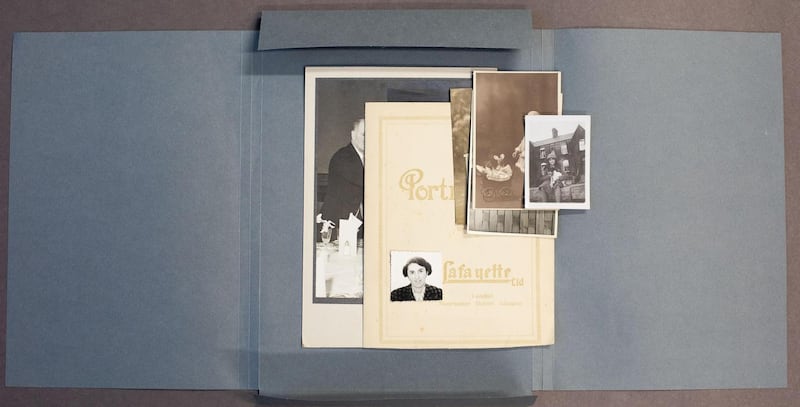
Elizabeth kept a diary more or less consistently from the ages of 13 to 20. Four of these are in Maynooth, and four in Trinity. Sometimes she wrote her diary in English, and sometimes in French.
In 1940, Elizabeth was 16. That Easter, she mused on what the priest had said at a service on Holy Thursday. “He said that everything passes and this congregation will be dead and gone in another 70 years. I wonder if I will be alive then. I am now 16 and in that time I would be 86, it would be the year 2010. I wonder if I lived to be that age if I will remember what he said... I may be dead by then.”
She was to live another 76 years after she wrote that entry.
By the age of 17, she was attending a technical school, where she learned cookery, dressmaking and food preservation. In December that year, she writes: “Auntie and I went to the bank after breakfast and I got my first check book. Sad I think because it makes me no longer a child.”
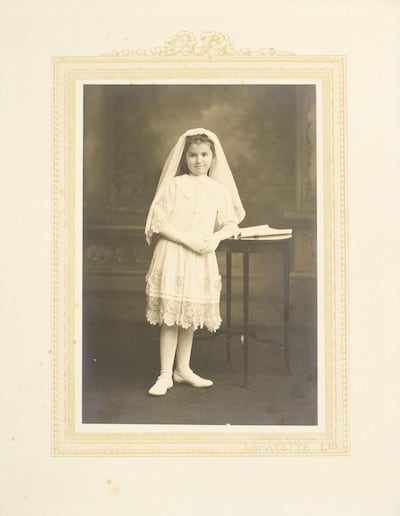
Also that month, on St Stephen’s Day, a man named “Wilson” (not his real name) makes his first appearance in her diary. “After lunch today Wilson called... had sent him to ask me if I would go to the Ward Hunt Ball tonight. I said I would be delighted. Then rushed off on my bicycle to Miss Casey to get my opera cloak. Wilson called for me at 9.30 and I had a most enjoyable evening. I did not get home next morning till 5.30.”
Elizabeth went to several dances in the following year. She loved to dance, and had different evening dresses made up. One favourite was a white net dress with blue love knots. “These dances are ruining me as I think of nothing else,” she writes at one point that year.
At the back of this 1942 diary on a blank undated page, she writes. “I wonder what 1943 will foretell. Will I be married? And will the war come to an end?... I keep thinking of [name crossed out]. I hope I am not in love... I would like to put down some of my impressions but am afraid of people reading them.”
Seventy-six years later, this reporter read those words in a silent library archive and felt a wrench for the young girl who had written them.
In January the following year, she writes: “Auntie and I went down town and met Wilson in Grafton Street. Auntie asked him to come to tea this afternoon and he said he would … he never turned up. I was very disappointed. It is funny to meet him today as I had made a resolution for the new year to try and forget him and put him out of my mind completely and after tomorrow I will have to start again which makes it harder.
On July 24th she wrote, “I do wish I could forget about Wilson. I made that my promise last New Year’s Day but I have not been able to keep it up. I dreamt the whole of last night about him. I know I am quite mad.”
Handbag and bonbons
On January 14th, 1944, Elizabeth wrote: “Today is my birthday and I am 20. I feel sad. My life is passing. I have done nothing in the time. Auntie gave me a handbag and some bonbons.”
Those were to be the last birthday gifts Annette Sykes, then 83, would give her niece. Less than a month later, she had a heart attack in the night, and was anointed. Nurses were engaged to attend to her around the clock.
- February 7th: "I sat in terror all the afternoon... that Auntie should have another heart attack. I was terrified the whole day."
- February 10th: "We had an awful night. I thought Auntie was dying. I cannot write anything about it."
- February 14th: "Crowds of visitors the whole day."
- February 16th: "Auntie died at 9 o'clock last night."
- The handwriting for the entry of February 17th is uncharacteristically shaky and untidy. "The coffin was taken to St Kevin's for the night."
- February 18th: "The funeral. I lived on my willpower today."
- February 19th. "I don't remember what I did."
There are no more entries until this anguished one on March 16th: “This loneliness is terrible. It is at night time I feel it most having no one to speak to. I feel it is growing more as the pace of time grows more every day since the funeral. I miss my aunt more as time passes. It is terrible.”
As Elizabeth was not yet 21, she was made a ward of court, and her guardian named as Lewis Herbert Winckworth of Westminster in London. Her aunt’s considerable estate, which included ground rents of various Dublin streets, was to be held in trust for her until she turned 21 or married.
That summer, Elizabeth’s diary records a large number of lunches and teas and suppers. Lords, ladies, countesses and a baroness were frequently calling to the house at 39 Lower Leeson Street; today, Angels Lap Dancing Club is located in the basement of the building.
There is no further mention of Wilson. It appears many conversations were being had between these titled visitors and Elizabeth about her future. The diary entries stop in November.

Marriage
Elizabeth Sykes came of age on January 14th, 1945 and inherited her aunt's estate. On February 9th, this newspaper carried the following notice: "The engagement is announced and the marriage will shortly take place, between Major JW O'Kelly OBE Ballygoran Park, Maynooth and Elizabeth, only daughter of the late Otway Richard Sykes and Alice Sykes, of Yorkshire."
On March 14th of that year, Elizabeth married widower and retired army officer Major John William O’Kelly. She was 21. He was 62.
The couple lived together in O’Kelly’s large house at Ballygoran, Co Kildare. They took several long cruises in the following years; cruises during which Elizabeth frequently kept a diary again. Once she married, however, she stopped the practice of writing daily. The O’Kellys travelled by ship to South America, Canada, South Africa, Japan, Malaysia, and several other countries. They both travelled on British passports.
In January 1952, they were sailing to Cape Town, and had just passed the Cape Verde islands. It was O’Kelly’s habit to take afternoon naps while his wife played deck quoits and table tennis and shuffle board. “There was dancing after dinner and John and I watched it. No one asked me to dance. They may have thought I did not want to dance when they did not see John dancing with me.”
In January 1954, she took a three-month voyage with a woman friend to Vancouver: she did not always travel with her husband, but when she didn’t, she always travelled with some female companion. “My birthday today. I am 30 years of age. Youth is gone.”
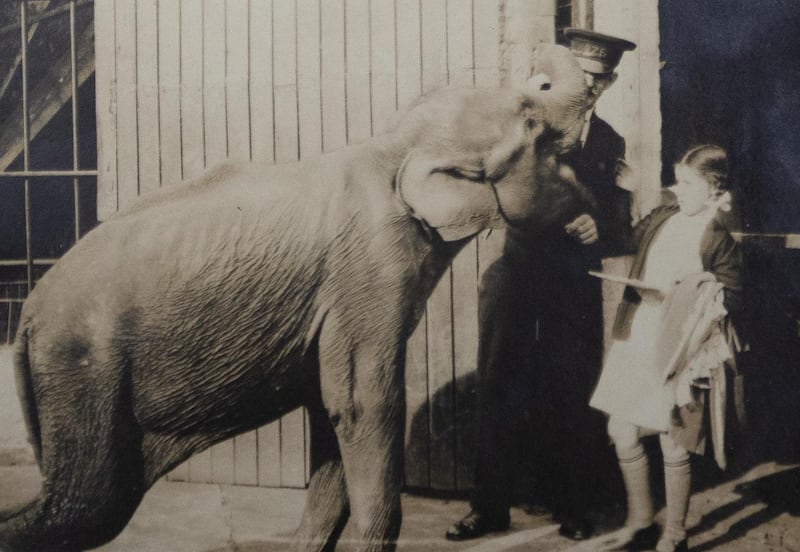
Travels
John O’Kelly died in 1962, aged 80. Elizabeth was 37. She was never to remarry and, like her late aunt, did not have children. On her husband’s death, she inherited a large number of stocks and shares; investments that were later to make up a substantial percentage of her donations to charity.
After his death, she sold the Ballygoran house in 1964. She travelled for long periods to Argentina and Uganda at this time. In the late 1960s, she bought a house at Knockaulin in Leixlip, Co Kildare, where she lived for a time. She took up membership of the Kildare Archeological Society and the Irish Georgian Society.
Sometime in the 1970s she came across Cholmeley Dering Cholmeley-Harrison. “I think they met through mutual friends, possibly through the Irish Georgian Society. They would have known some of the same people,” says Fr Conor Harper.
Fr Harper is a now-retired Jesuit priest who first met Elizabeth at Emo Court in the 1970s. British-born Cholmeley-Harrison, who was married three times, had bought the Emo Court estate in Co Laois from the Jesuits in 1969.
Emo is one of the few private houses designed by James Gandon, who was the architect of both the Four Courts and the Custom House. It had been acquired in the 1930s by the Jesuits for their Irish novitiate.
Cholmeley-Harrison, a former highly successful stockbroker and member of the London Stock Exchange, also had inherited wealth. He bought and renovated the 300-acre estate and moved into the main house. Sometime in the 1970s, he rented Emo’s Dower House to Elizabeth.
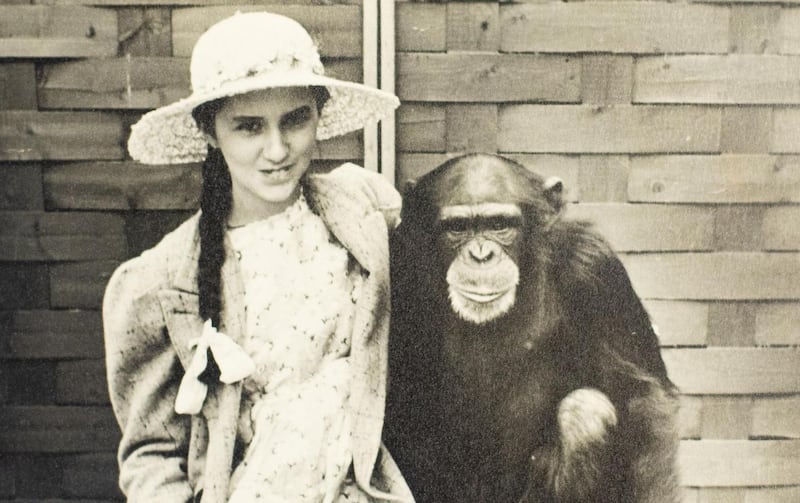
Life at Emo
“Maura” is one of the few people who knew Elizabeth, Cholmeley-Harrison and Fr Harper well. She does not want to give her real name. “I wouldn’t want people wondering if I was only friendly with her because I knew she was wealthy,” she says.
Maura clearly recalls Elizabeth’s years at Emo. “She loved the place. I think one of the reasons she rented it was because she had all this beautiful old antique furniture and they were big pieces; there’s not every house you could put that furniture into. I think it was family furniture.” The two of them often had tea together, and sometimes dinner.
“She was a lovely lady and a real lady, but she never spent anything on herself. She lived a very simple life,” Maura says. “You’d never think she had money. I’d say that coat she had, an old tweed coat, she probably had it for 40 years. She used to go out into the grounds of Emo with a basket in the mornings and collect sticks for the fire. She never bought in bulk. It’d be a couple of potatoes, a couple of tomatoes, an onion; she only bought what she needed.” Maura says Elizabeth loved her Emo garden. In the Maynooth archive, there are albums full of photographs of the lovely garden she tended at Emo; filled with bright flowers.
One winter, when Elizabeth fell ill with pneumonia and had to be hospitalised, Maura went with her. “The nurse was talking to her, and I could hear, because there was only the curtain around the bed between us. The nurse asked who she should put down as next-of-kin, and Elizabeth said, ‘Nobody’. I’ll always remember that.”
I have ceased a long time ago asking what I should do with my life. Life would just be too easy if one knew. I have learned to accept this
The diaries Elizabeth kept sporadically after her marriage were usually in lined school exercise copy books. Not being formal diaries, they didn’t have pre-printed dates on them, and as she did not always date her entries, it’s sometimes unclear when exactly she wrote what. But sometime in 1977, when she was 53, she wrote this: “I suppose I will continue to go on the remainder of my life not knowing what I am meant to do. I have ceased a long time ago asking what I should do with my life. Life would just be too easy if one knew. I have learned to accept this.”
At Emo, Elizabeth never spoke to Maura about her early life, or her years in Dublin, or about her late husband. “He was dead a long time by then,” she says.
“She never spoke about her family to me,” Fr Harper says. “I did know she had been made a ward of court, because of some family money. She was never boastful about her wealth. I was aware that she regularly visited her accountant and solicitor, and that she kept track of her investments, because she told me she did. She was very careful about her investments, but it wasn’t for her own ends: she felt a duty that she had to take care of this money to pass it on.”
At Maynooth, there is a thick black ledger in which Elizabeth carefully and methodically over decades entered the names of various stocks and shares and their dividends.
Cholmeley-Harrison and Elizabeth chatted on the phone most days, and regularly had afternoon tea or an evening drink together. In 1994, Cholmeley-Harrison made the decision to gift the Emo estate to the State, with the proviso that he remain living there in an apartment for his lifetime. The then president, Mary Robinson, accepted a symbolic key from him at a ceremony at Emo, and the estate passed into the care of the Office of Public Works (OPW).
Given how frequently Cholmeley-Harrison and Elizabeth talked with each other, does Fr Harper think that perhaps she was influenced by his own donation to the public good, when considering what she might do with her own wealth?
“I think it may well have been the other way around,” he says. “She may have influenced him. That is what I think, but that is just my own speculation.”
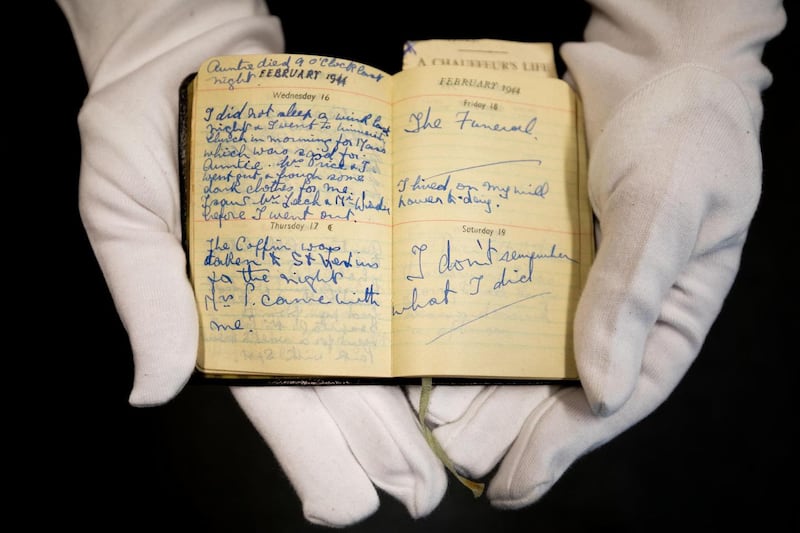
Visits to France
Elizabeth, who was fluent in French, had bought a house in Bilhac, a village in central France. She went there every year for at least three months for many years. There is a note among her papers which states, “I wish to be buried in France with my parents should I die on French territory.” Another expressed her wish to be buried with her husband, should she die in Ireland.
As a person of devout faith her entire life, and who attended Mass daily whenever possible, she was dismayed when the village church ceased its daily Mass, due to the shortage of priests and the smallness of the community.
“So she asked me to come out and visit her, and would I mind saying Mass in the church for the duration of the visit,” Fr Harper says. He did so. “The place where she lived in France was very small, and the train didn’t usually stop there because it was more of a siding, but it stopped for her,” he recalls. “She was a benefactress of the village, in the same quiet way she was to many others.”
The diary entry for her 60th birthday read: 'Bicycled when it cleared up to Portarlington to buy Irish Times' – a round trip of 16km
In conversations about Elizabeth, I heard stories of her generosity over the years. A new car to an old friend. A mobility buggy to an ageing friend who found it a challenge to get about. Donations for the upkeep of churches.
It wasn’t just her money she was generous with but her time. She was a Eucharistic minister. She regularly volunteered with the RNLI on days when they were collecting from the public. Before Emo went into State ownership, she collected the modest fee charged to view its gardens on Sundays.
She carefully kept the copy of The Irish Times of 1945 which carried the notice of her engagement, and remained a reader of this paper all her life. The diary entry for her 60th birthday in 1984 read: "Bicycled when it cleared up to Portarlington to buy Irish Times" – a round trip of 16km.
Surgery
In the late 1990s, Elizabeth had successful treatment for cancer at Portlaoise Hospital. In January 1999, she wrote a letter to the Leinster Express, thanking the hospital staff who had seen through her surgery. The letter continued, "I query the reason why the oncology unit that was opened by the then president Mary Robinson in December 1994 and bears her plaque is not yet in use although there is already trained staff to man the unit? I know that this causes extreme hardship for patients who have to travel to Dublin for treatment."
In March of that year, she wrote a broadly similar version of that letter to this newspaper, adding another paragraph, “The present minister for health, Mr Brian Cowen, sanctioned cancer facilities to be set up at Tullamore Hospital. The facilities are already at Portlaoise waiting to be put in use after four years’ waiting.”
Seventeen years later, the Irish Cancer Society was to receive a €6 million bequest from Elizabeth; their largest single donation.
Moving to Stradbally
It took time after Emo Court passed into State ownership for the OPW to sort out the estate, but at some point Elizabeth was given notice to vacate the Dower House there. “She would have stayed there for the rest of her life if she could,” Maura says.
Elizabeth searched for a period house in nearby towns; somewhere that would not be too far from Emo. It also had to be of a size to accommodate the antique furniture she wished to have around her, some of which may have come from the Leeson Street house she occupied in childhood.
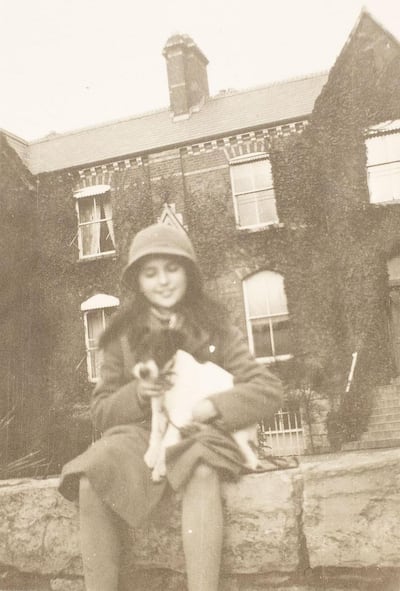
Elizabeth Connelly became a friend of hers in the 1990s. That was the decade Elizabeth bought a Georgian house in Market Square, Stradbally, 10km from Emo, which was to be her last home.
Connelly was a frequent visitor to the Stradbally house, where there were always fresh flowers. “She was surrounded by family furniture in that house, and she didn’t want to change any of it. She could have made things more comfortable for herself, with say, a new sofa, but she didn’t want to go out and buy anything else.”
Connelly says, “It took quite a few years to get to know her, because she was quite a private person. She was so gracious, friendly and kind, and always interested in other people and what they were doing. But she never really volunteered any information about her own life.”
Connelly had no idea her friend was extraordinarily wealthy. “I knew she was comfortable, but I also knew she had some bank shares, and we all know what happened to Irish bank shares. I did worry about her; that she would be all right as she got older, because she didn’t have any family I knew of.”
In 2005, the Leinster Leader group of newspapers was sold to British regional newspaper group Johnston Press for €138.6 million. Elizabeth had inherited her shares in the group from her late husband, who had in turn inherited them from his first wife.
At the time of the sale, she was the largest shareholder with 140,000 shares. She had been what’s known as a silent shareholder; not getting involved in the day-to-day running of the business, beyond attending the group’s annual general meeting.
She made more than €30 million from her portion of the shares. “Or rather, as she said to me once, it was more like €20 million when the tax man had been paid,” Fr Harper says.
That December, Elizabeth anonymously gifted a sum of €3,000 to each staff member of the Leinster Leader: the maximum amount that could be received as a gift before accruing tax. At Christmas, she was toasted in absentia by the news staff at a gathering, who suspected their unexpected windfall had come from her, although she never publicly admitted it.
‘A lady’
Elizabeth’s last will and testament was drawn up on September 15th, 2008, when she was 84, one year older than her aunt Annette Sykes had been at the time of her death. Her old friend, Cholmeley-Harrison, who had left Emo Court to the State, had died in July of that year, aged 99. By then, the Dower House, Elizabeth’s former home, had been turned into a café.
Less than two months after Cholmeley-Harrison’s death, she signed her will with the same distinctive cursive flourishes she had displayed when writing the diaries she had kept long before, while a young girl living at 39 Lower Leeson Street. By then, her name had been published in media reports of the sale of the group. Word filtered down among the residents of Stradbally that there was a millionaire among their midst; that it was the quiet, reserved woman in her 80s, living in the distinctive house on Market Square, who always did her modest grocery shopping using a wicker basket.

“You’d know by her appearance that she was a lady,” Sylvester Phelan, who owns the Grandstand Newsagent and Grocery in Stradbally, recalls of his former customer. “She always had her hair up very elegantly in a bun. It was known she was wealthy, but nobody really knew anything much about her life.”
“She came in here from time to time,” says Mark McDonnell, who is behind the counter at Feighery’s Butchers. “We are very proud of her in Stradbally. It was an amazing thing to do; to leave all that money to such important charities. It’s rare that people are so unselfish.”
In her latter years, Elizabeth was attended by carers at her home, and did not go out much. When she died on December 11th, 2016, there were few people at her funeral. The book of condolence provided by the undertakers for mourners is held at Maynooth and holds the 41 signatures. She was buried at Moyglare Cemetery in Maynooth, Co Kildare, beside her late husband.
In October the news emerged about her charitable donations. “We were all shocked at the amount of her fortune,” says Elizabeth Connelly. “But I thought it was just the kind of thing Elizabeth would do; trying to help charitable foundations that would benefit from her money.”
Fr Harper knew that Elizabeth was leaving money to charity, but “I did not expect the amount. The reason she waited to leave her bequests is because she did not want the notoriety of making these magnificent donations in her lifetime,” he says. “If she did something for you, she would let you thank her, but just once. She hated fuss. Elizabeth had the courtesy and style of a bygone age.”
Archive photographs by Tom Honan/courtesy Maynooth University












